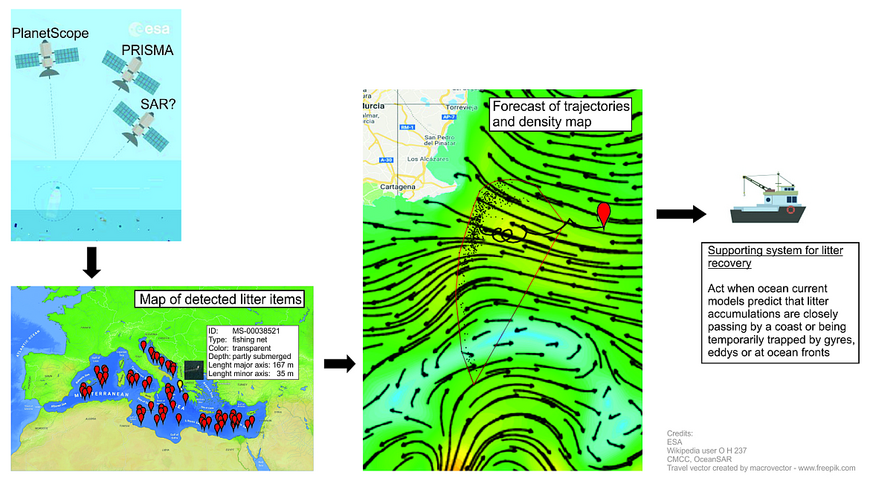Detection and tracking of large marine litter based on high-resolution remote sensing time series, machine learning, and ocean current modelling - TRACE
With this investigation we pursue the overall goal to obtain precise and reliable data on floating macro-litter regarding their quantity, position, accumulation zones, material properties, floating depth, and sources, which may serve as a basis for litter recovery, source elimination, and prevention of litter dispersal. To achieve this goal we will develop a remote sensing based detection and tracking system for large floating marine litter. The system will consist of components for remote sensing data analysis for litter detection (high resolution optical and SAR) and identification (hyperspectral), oceanographic forecasting, GIS analysis (overlay and merging of results, uncertainty analysis, and litter tracking), and a web interface for visualizing the results. In this early technology development project we aim at proceeding with our basically formulated concept of the system from TRL2 to TRL6. As some components (oceanographic forecasting, SAR-based eddy detection) are already operationally in use, the main focus will be put on the application of machine learning and deep learning algorithms for plastic litter detection based on daily high-resolution optical (PlanetScope or SkySat) and SAR data as well as on the development of algorithms for litter tracking over time in daily remote sensing imagery. This methodology will be further developed, expanded and tested in the Adriatic Sea in close cooperation with CNR-ISMAR and isardSAT.
When the oceanographic forecasting and object tracking system predicts a larger number of detected and tracked large afloat drifting objects to accumulate within a fairly small region for a certain period of time, hyperspectral satellite data will be acquired from that region. Spectral classification methods will then allow the identification of plastic material based on spectral absorption features. In case of success this will be the first identification of offshore floating plastic marine litter from space.




